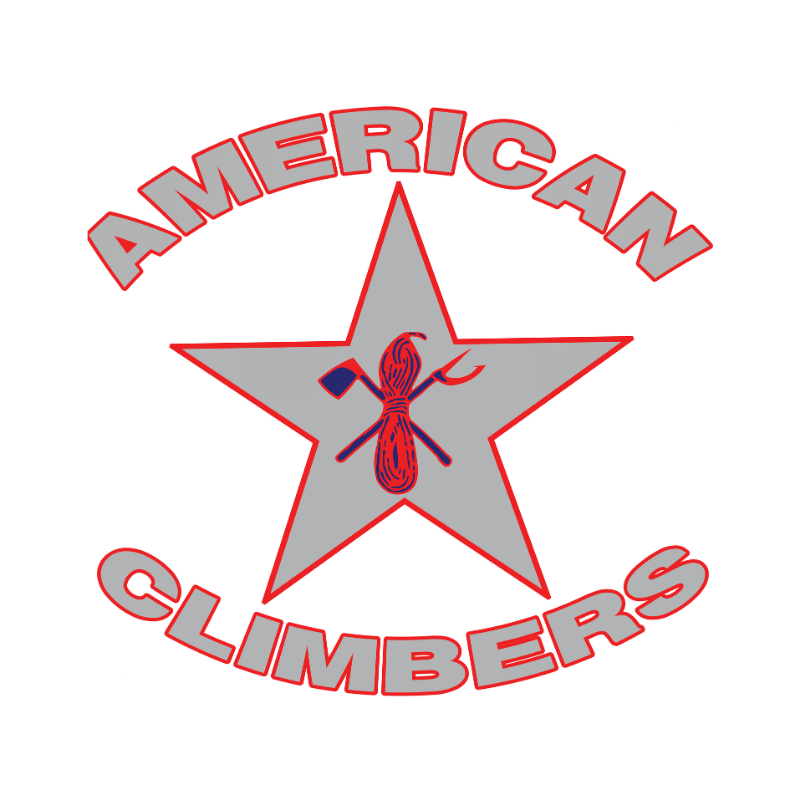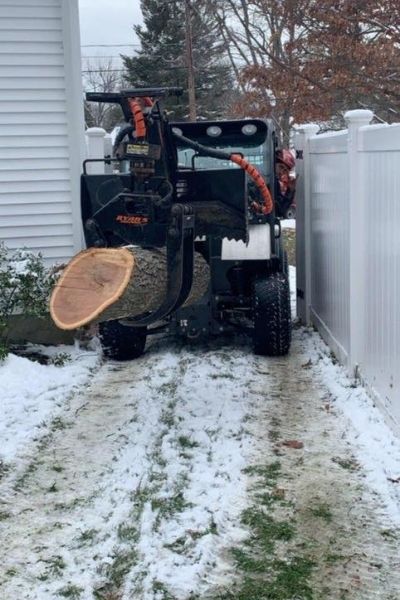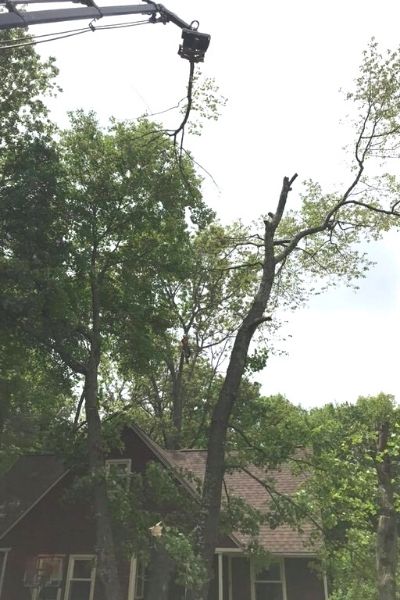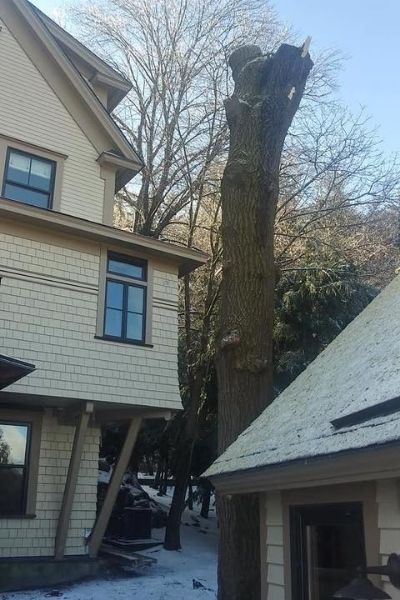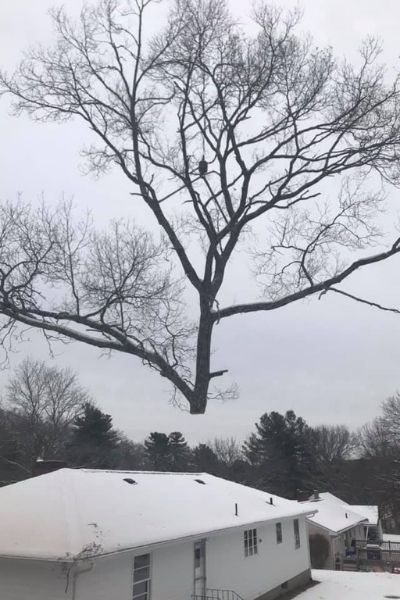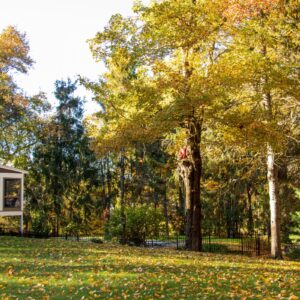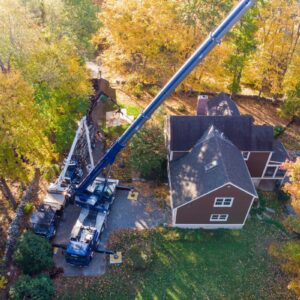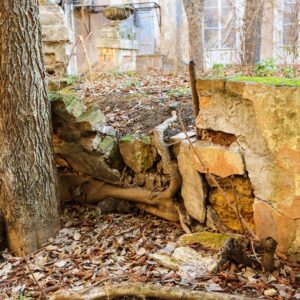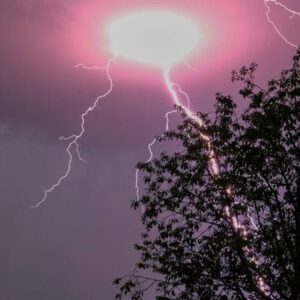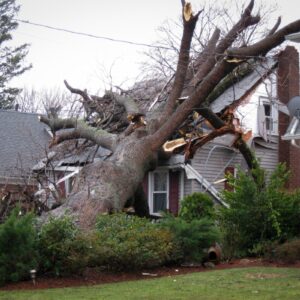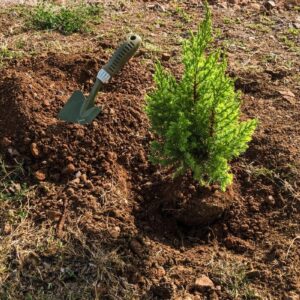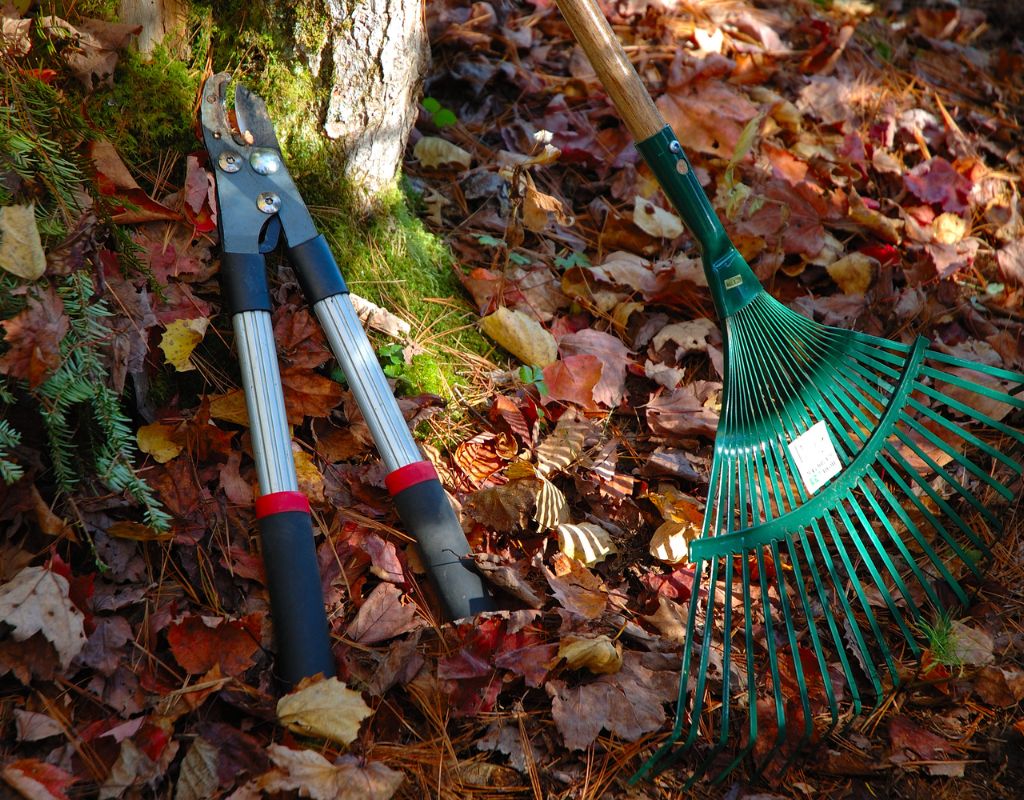Tree removals are always difficult and potentially dangerous, but even more so when the tree is in a confined space or a location that’s hard to access. Although it’s not easy and definitely not a DIY job, it is possible to cut down a tree between two houses, remove a big tree from a small yard, and take down a tree in a narrow space. While not all tree companies are equipped to handle this type of removal, the American Climbers team has extensive experience in removing trees from difficult and confined spaces.
That’s why we thought it would be helpful to let you know some of what goes into removing trees in close quarters, the equipment needed, and what you can do if you have a tree in a hard-to-reach area.
What is a confined space?
Any place where it’s difficult for equipment and crews to fit is considered a tight space. Safe distances are important on a job site for crews using heavy equipment and when the property is at risk from accidental damage.
Common tight spaces where we remove trees include:
- Small backyards – Urban spaces are often small and crowded, with limited access.
- Narrow spaces between buildings – Building setbacks can be too narrow for equipment to fit.
- Close to power lines – Any tree work done close to high-voltage power lines requires careful planning (see why in our article on removing trees near power lines).
When should you remove a tree from a confined space?
If you have a tree growing in a hard-to-reach space, regular maintenance can be tough. Sometimes removing the tree is a better option. Some common reasons a tree may need to go are related to a tree’s health and how (and where) it’s growing.
- Tree is dying or is dead – You’ll save money and headaches by removing a dead or dying tree sooner rather than later. These trees are often unsafe for climbing crews and can cause significant property damage.
- Rubbing tree branches – When tree branches grow up against buildings, they can damage siding and windows as they move in heavy winds. And the tree’s bark can also rub away, creating wounds for diseases and insects to attack.
- Roots at building foundations – Tree roots can cause expensive damage to buildings and underground pipes. Usually, someone has planted the wrong species in the wrong place, so don’t blame the tree! A good rule to follow is to always plant trees at least 15 feet away from your house. If your tree will grow to over 60 feet, plant it a little further away.
- Trees blocking access – If you have trees growing close to sidewalks, driveways, or entries, they may prevent clear access. While you may know where to maneuver under branches or around trunks and roots, visitors, emergency vehicles, and pedestrians should have a clear, safe route to your door. And trees growing between buildings can make it difficult to get by them to access the backyard, especially with lawn and yard equipment.
- Leaning trees – If you notice that your tree is leaning where it once was vertical, have it professionally evaluated ASAP. Sudden leaning in a tree can be a sign that it’s diseased, or that its roots are no longer secure.
- Hazard trees – When a tree is in poor health (or dead) and is within range of property or people, it’s a potential hazard. This is because a tree that’s decayed or dead is unpredictable. It can drop branches at any time, or just fall over in the middle of the night.
Please don’t plant trees in confined spaces! Ensuring your tree has plenty of room to grow will:
-
- Allow your tree to grow without repeated pruning to keep its branches clear of exterior walls
- Prevent conflicts with utility connections, and
- Ensure that even a tree species with invasive roots won’t grow into your foundation.
Why Removing Trees From Confined Spaces is Dangerous and Difficult
All tree removal work can be dangerous but cutting down a tree between buildings, in a small yard, or other confined space adds a whole other layer of difficulty. Here are some of the reasons why this type of tree removal takes more time to complete and often costs more than other tree removal work.
- Proximity to structures. When you’re working in a tight space and up near a building, it’s easy to damage a wall, roof, or window. Even professional arborists struggle when there’s not enough room for equipment and crews to move freely while cutting down a tree. It also limits the techniques that can be used to cut down the tree.
- Utility lines. An arborist may have to coordinate with a utility company to remove a tree in a hard-to-reach spot. When a tree’s branches are close to power lines, or those lines are in the way of tree-removal equipment, the possibility of electrocution is real. Plus, just one branch that falls in an unexpected direction could cause a power outage for thousands of people.
- Tall heights. When there’s little clear space around a tree, you can’t safely drop branches without risking damage. The climber and the ground crew must carefully ease sections of branches down to a clear spot on the ground.
- Removing cut tree parts. The first thing a tree crew evaluates is where all the branches and trunk sections will go as they’re removed. This can be a lot! When a crew is climbing up a tree (removing its branches) in a cramped space, they may use a speedline to quickly move cut branches out of the way. If that’s not possible, each branch and piece of the tree will need to be cut into smaller pieces and hauled out by hand.
DID YOU KNOW? A speedline is like a zip line for branches, except it’s less fun. Branch sections are attached to a rope sling and sent down a tensioned (taut) rope line secured from the tree to the ground.
How to Remove a Tree in a Confined Space
There are three techniques typically used to cut down a tree that’s growing in a confined space. Which option your tree service chooses will depend on several factors, such as:
- how narrow or tight the space is,
- the height and proximity of nearby buildings,
- whether or not the tree can be safely accessed by heavy equipment, such as a bucket truck,
- if there are power lines nearby or within the tree canopy, or
- whether there’s a large open area beside the spot where the tree is growing.
Option 1: Remove the Tree in Sections
Removing a tree in a tight space means you usually cannot cut the tree at its base and let it fall. Instead, the tree is cut down into sections and removed piece by piece.
Branches are cut off first as a climber goes up a tree. Then the tree’s trunk is cut into sections, starting at the top. A climber follows the trunk down as sections are cut. This is done with a speedline or with ropes.
While this may sound clear and easy, it is never a DIY job. A homeowner risks serious injury or death, as there are countless ways things can go wrong. Leave it to trained professionals!
Option 2: Remove the Tree With a Crane
This option is the quickest and the safest, as it limits the number of cuts a climber has to make.
To remove a tree with a crane, the trunk is attached to cables and lifted out by the crane. The crane then swings (carefully!) to deposit the trunk in an open area where it can be cut into sections. Depending on the height of the tree, its trunk may be removed in several sections.
Option 3: Fell the Tree
It’s uncommon that an urban tree can be removed by cutting it and letting it fall.
Tree felling is neither simple nor easy, despite what cartoon lumberjacks and home videos may suggest. It is not a DIY project!
To fell a tree, an arborist first makes two specialized cuts across a tree’s trunk to make a notch. Together the angles of these two cuts make a notch between 60 and 90 degrees. Then a third, horizontal cut is made on the opposite side of the trunk.
Between these cuts is a center portion of an uncut trunk called a hinge. The hinge helps control how the trunk will fall.
The arborist may use metal wedges (think of a doorstop), driving them into the third cut to force it wider. This tilts the trunk toward the notched side where it will fall.
A crew may also use tensioned ropes to pull and slow the tree’s fall. Crew members stand well clear of the tree when pulling these ropes. As the tree falls toward its fall zone, the hinge will crack and splinter.
Not All Tree Service Companies Will Remove Trees in Tight Spaces
The most common reasons a tree service company won’t tackle trees in confined spaces are because:
- They don’t have experience working in narrow or limited spaces
- Their crews aren’t skilled enough and/or don’t have the training to do the work safely
- They don’t have the specialized equipment required for this work
Equipment Needed for Confined Space Tree Removal
There are a few pieces of equipment that you need to remove trees from narrow spaces, and American Climbers has them.
- Crane. This is the most important piece of equipment for removing trees from tight spots. We own our crane, and all crew members are familiar with it. A trained, certified crane operator runs it when we’re removing trees, to ensure everyone’s safety.
- Bucket lift and bucket truck. A bucket lift is a hydraulic, jointed boom that the operator guides vertically and horizontally to reach a tree. A bucket truck is similar, but the boom is attached to a truck and can handle larger jobs. Depending on how narrow the area is and how much space there is nearby to safely park and stabilize the bucket truck, we may not always be able to use it when removing trees in confined areas.
- Chipper. The branches we cut off a tree during removal are fed into a chipper, where they’re chewed up into mulch. If the mulch is not used on-site, the chipper feeds the mulch into a truck bed for removal.
- Log truck. When a tree in close quarters is removed, it’s often taken down in sections. These log sections are laid onto the flatbed of a log truck, where they’re tied down and hauled off.
Preparing for Tree Removal from a Confined Space
The first thing you should do is make sure the tree service you hire has the skills, experience, and equipment to do the job!
Then schedule tree removal ahead of time. This gives you time to move all items near the tree, including vehicles, away from the area to prevent damage from falling branches and debris.
>> See how to fully prepare for tree removal on your property.
Need Help?
If you have a tree in a confined space that you want to have removed, give us a call at 508-497-8628 to schedule an appointment or use our online form to request a tree removal quote.
Blog Topics
Recent Posts
What's Happening? Stay Informed!
Stay on top of local events, pest and disease updates, tree and landscape tips, and more. Delivered straight to your inbox each month.
